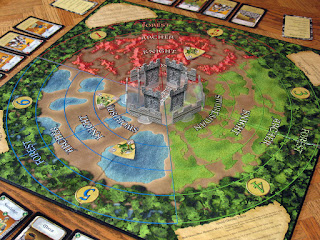 |
| image from here |
In my opinion, today's heavy focus on STEM (Science, Technology, Engineering, Mathematics) is producing a society where communication skills are under-valued and (therefore) under-developed. Ironically, in an age where we have more ways of communicating than ever before, we do it increasingly poorly. And yet it's vital! The best scientists and engineers undermine themselves through poor communication.
Earlier this month, I read a smattering of books on public speaking, one after another. I enjoy this approach- it gives me a balanced and diverse perspective on a topic (I did it last year for the canon of Scripture) while things are fresh in my mind. And, I've found value in producing a summary of what I've learned, concisely articulating it for posterity. To that end, below is my take on public speaking, based on ideas from books reviewed earlier this month. I break it into four areas: basics, audience, preparation, delivery.
1. Basics
The goal of public speaking is to inform, influence, and interact with an audience.
- We inform through sharing ideas and information.
- We influence by affecting how people see the world. Everything we tell them adds to, affirms, or alters (challenges) their world view. That's powerful!
- We interact by engaging the audience- building relationships, addressing needs and collaborating in real time. It's possible to be informed and influenced by many things, but interaction is what sets public speaking apart.
The golden rule of public speaking: it's not about you! Communication is for the recipient. Sometimes speakers think it's their time to build themselves up, brag, or blow the audience away with knowledge and accomplishment. Dead wrong. You are giving something to your audience- it's about them. Make it count.
The value of public speaking: it makes you learn your topic better than you would otherwise (if you want to learn a topic, try teaching it; when preparing properly, you'll increase understanding). Additionally, it helps you articulate your thoughts in a coherent, concise, logical form. Not to mention the aforementioned influence a good talk can have. So don't shun opportunities! Embrace them as chances to learn.
2. Audience
Because it's not about you, understanding your audience is key to effective public speaking- and it shapes your preparation. There are many things to consider about your audience:
- Who: How many people? What's their background (seniority, education, occupation, culture)? What's their disposition and expectation?
- What: what's the topic?
- Why: Why were you asked to talk? What is the audience expecting? What do they need?
- When: How long do you have? What time of day? Are you a stand-alone talk or one of many? If the latter, where do you fall int he sequence?
- Where: What's the room like? What are the possibilities and limitations?
3. Preparation
Once you know your audience, it's time to prepare your talk. The first key is to know your topic thoroughly. This helps you convey confidence and competence to your audience- not to mention it gives you flexibility to adjust the talk on the fly based on questions and audience needs.
The second step: develop an outline with your main points, keeping your audience and purpose in view at all times. A few keys here:
- Keep it simple. It's key to common understanding.
- Don't assume- avoid jargon and define key words. Include the basics. Einstein once said "if you can't explain something simply, you don't understand it well enough."
- Focus the message on what the audience needs, and no more.
- Make it flow logically, producing a connected narrative.
- Be as concise as possible. Plan for less time than you have. I've never heard people say, "Gee, I wish that would have lasted longer." I've heard plenty say, "When will this end?"
- Be authentic; people can spot a faker. Say what needs to be said- nicely. Candor is refreshing and less common than you might think.
- Add supplemental materials- or don't. What makes sense? Handouts? Slides? If using slides, use simple messages, shocking stats and powerful images to convey points quickly- in three seconds or less! Any supplemental materials divide the audience's attention between you and what you gave them- keep that in mind.
- Use stories and examples. These inspire and give emotion/relevance to data.
- Humor can be powerful and unifying, but be careful.
4. Delivery
Once you've prepared and practiced, it's time to deliver your talk.
- Beforehand: know the room and dress appropriately (which generally means matching your audience).
- At the start: gauge and engage the audience. Check their disposition, energy levels, etc. Interact with them and get them involved from the start. Tell them your plan so they get the big picture and can follow your talk as it progresses.
- Throughout: model what you want them to feel- remember the importance of tone and body language in so doing (Professor Mehrabian had a famous study that indicated only 7% of emotion is communicated through what is said; the other 93% is through tone (how you say it) and body language. DON'T user filler words ("um, uh, like," etc.). Filler words are poor attempts to avoid the perceived awkwardness of short silences. In truth, pauses help folks process. Pay attention to the audience; adjust based on continual feedback. Sometimes, you may even have to scrap your plan to meet their needs.
- At the end: recap the main points, including takeaways if applicable.
- After: your talk doesn't end when it ends. Answer questions, follow up, provide promised information or materials, and review feedback if offered.
-----------------------
If you remember nothing else from the above, take away the keys: remember your audience, know your material, keep it simple, and practice. If you do these things, you will be an amazing public speaker.
























